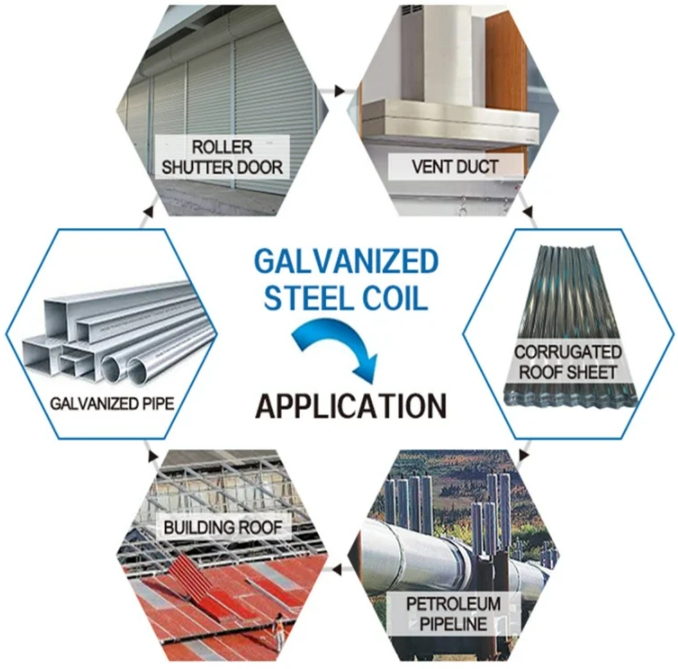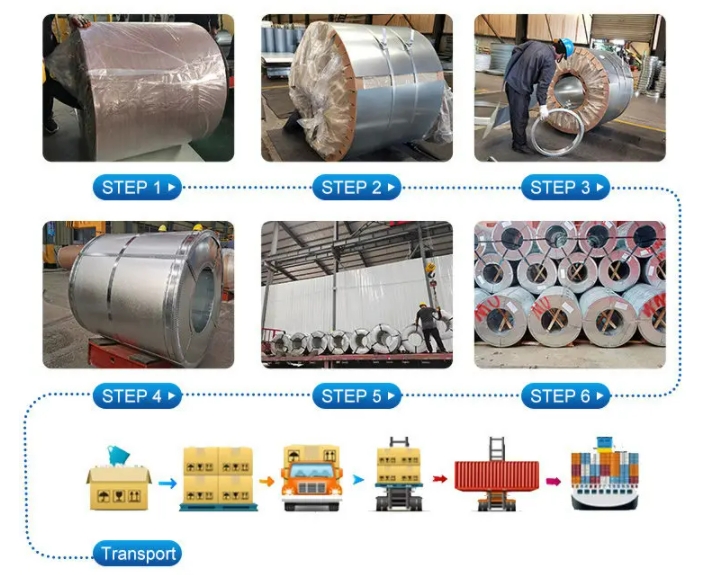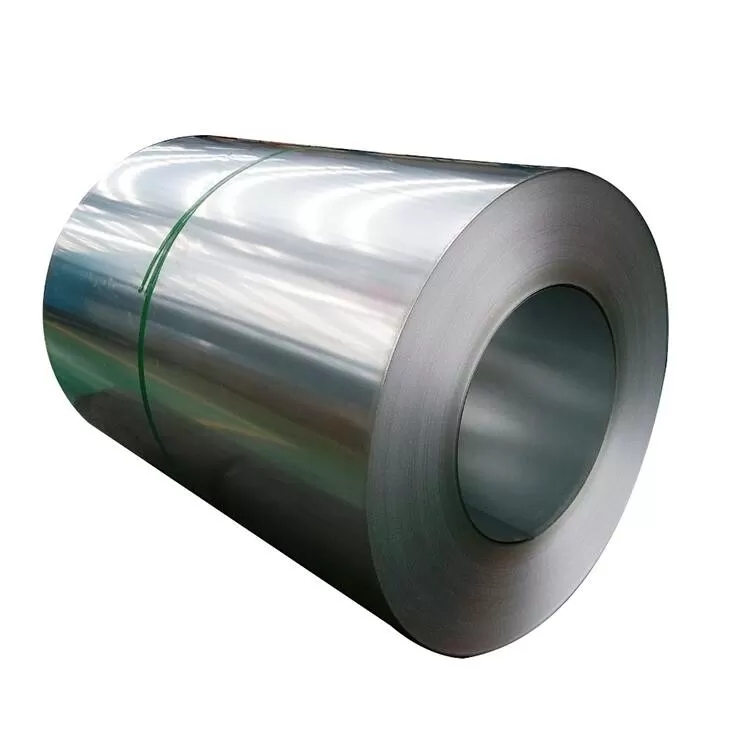Our hot-rolled galvanized steel coils combine the structural strength of hot-rolled base metal with the superior anti-corrosion properties of hot-dip galvanizing, delivering exceptional performance for demanding environments.
Galvalume Steel: The optimal Solution for High durability engineering
Aluminized zinc steel sheet is made by using an alloy ratio of 55% aluminum, 43.4% zinc and 1.6% silicon, and a dense protective layer is formed on the surface of the steel through hot-dip galvanizing process. The aluminum oxide film formed by aluminum elements works in synergy with the sacrificial anode effect of the zinc layer, making its corrosion resistance 3 to 6 times that of ordinary galvanized steel plates. It shows no obvious rust after a 1000-hour salt spray test. This material has excellent high-temperature stability and can be used for a long time in an environment of 315℃. It is often used in outdoor high-corrosion scenarios such as industrial plant roofs and photovoltaic brackets. Meanwhile, its high reflectivity effectively reduces the heat load of buildings, achieving energy conservation and consumption reduction.
Galvanized Steel: The economic cornerstone of standardized engineering
The hot-dip galvanizing process provides basic anti-corrosion ability for steel through the sacrificial anode protection mechanism of the zinc layer. According to the GB/T 13912 standard, different galvanized layer thicknesses (80-275g/m²) can meet various requirements ranging from indoor structures to light outdoor environments. Its excellent weldability, formability and economy make it the preferred material for standardized products such as light steel keels and home appliance shells. In the fields of civil construction and ordinary industrial manufacturing, galvanized steel sheets can provide effective protection for 5 to 15 years at a relatively low cost, making them an ideal choice for projects that pursue cost-effectiveness.
Aluminum Coil/Pipe/Plate: Core materials for lightweight engineering
Aluminum alloy materials achieve a perfect balance between high strength and lightweight through alloying (such as the 6061 and 7075 series) and heat treatment processes. The tensile strength of 7075-T6 aluminum alloy can reach 572MPa, while its density is only one-third that of steel. It is widely used in aerospace structural components, new energy vehicle chassis and other fields that are sensitive to weight. Through surface treatment technologies such as anodizing and electrophoretic coating, a wear-resistant layer with a hardness of over HV 300 can be formed, which has both protective and decorative functions and is suitable for scenarios such as building curtain walls and interior decoration of rail transit.
Stainless Steel: The ultimate guarantee for engineering in extreme environments
Stainless steel exhibits differentiated corrosion resistance and mechanical properties due to different proportions of elements such as chromium, nickel and molybdenum. 316L stainless steel, containing 2% molybdenum, has excellent resistance to pitting corrosion in a chloride ion environment and is the standard material choice for Marine engineering and food processing equipment. 904L super stainless steel can withstand strong corrosive media such as sulfuric acid and phosphoric acid, and is often used in harsh working conditions such as chemical reaction vessels. In addition, the biocompatibility of grades such as 316L and 444 makes them key materials for medical implantable devices, ensuring human health and safety.
Aluzinc Steel: A pioneering material for circular economy projects
Aluzinc Steel continues the high-performance advantages of aluminized zinc alloy and combines closed-loop recycling technology to achieve 100% recycling and regeneration of materials. Its surface coating has a self-healing function. After minor scratches, a protective film can be re-formed through the oxidation of zinc elements, significantly extending the service life. In fields such as prefabricated buildings and logistics turnover boxes, its modular design and high reuse rate effectively reduce the full life cycle cost, contributing to the realization of green construction and sustainable development goals.
Prepainted Steel: An innovative carrier of functional aesthetic engineering
Color-coated steel plates are coated with organic coatings such as polyester (PE) and fluorocarbon (PVDF) on the surface of steel by continuous roller coating process. PVDF coating, containing over 70% fluorine, has excellent weather resistance and can ensure no fading or powdering for more than 30 years, making it suitable for high-rise building curtain walls. The HDP high-weather-resistant polyester coating meets the appearance requirements of industrial plants and residential buildings with a higher cost performance. In addition, the coating can integrate functions such as anti-fingerprint and easy cleaning, and supports CMYK full-color gamut customization, achieving a perfect combination of functionality and aesthetics.






